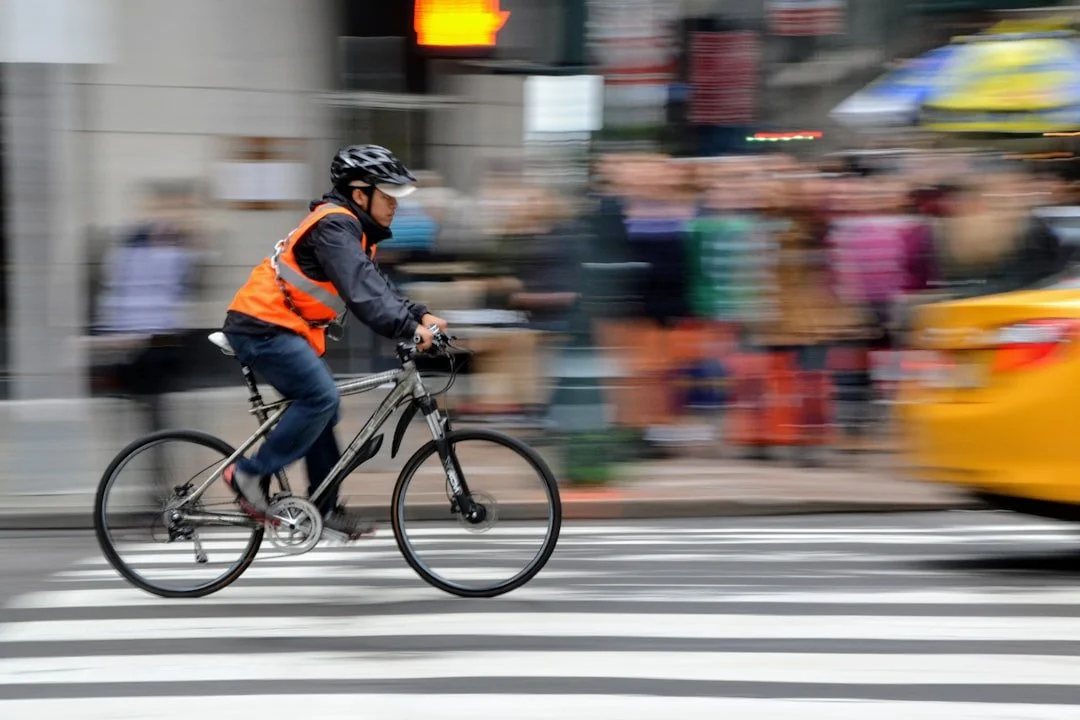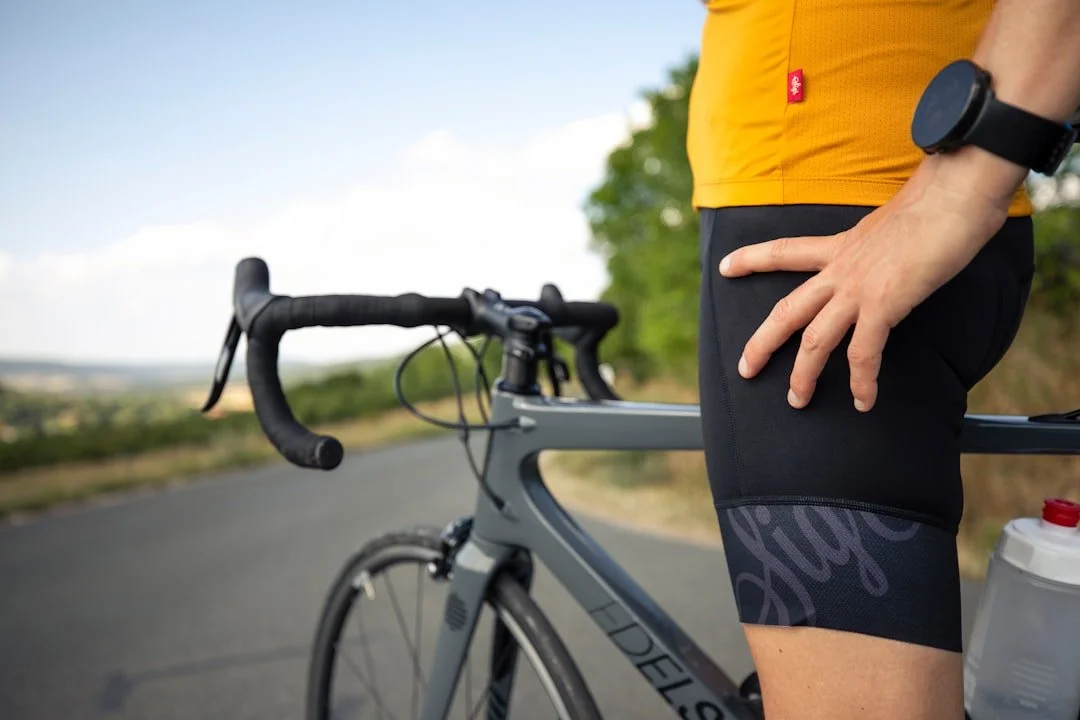Why Denver's 745 Annual Bike Crashes Aren't Just About Bad Drivers
By Brett Green, PT, DPT • 2025-10-13
Denver cyclist navigating city streets - where most of our 745 annual bike accidents occur in broad daylight
You're clipped into your pedals, rolling down 15th Street's protected bike lane, when your knee starts talking to you. Not the good kind of conversation—the kind that makes you wonder if you'll make it to work without calling an Uber.
Denver sees 745 bike crashes annually, averaging 62 per month. Most of these happen during perfect conditions: daylight, dry pavement, clear visibility. At the same time, 48% of cyclists are dealing with knee pain that has nothing to do with dodging distracted drivers[1][2].
The Overlooked Injury Pattern
Denver built 96 miles of new bike lanes between 2018-2021 and plans another 235 miles by 2050. But the injury patterns haven't shifted where you'd expect.
Three out of four bike crashes still happen in urban areas, dispersed citywide rather than concentrated in problem intersections or construction zones. Your injury risk is less about location and more about load management.
The most common cycling injury? Anterior knee pain, affecting 40-60% of recreational cyclists. IT band syndrome follows at 15%. Both are overuse injuries that develop over weeks, not seconds[3].
Your Knee Flexion Angle Matters More Than Your Helmet
When your saddle height puts your knee flexion outside the 25-30 degree sweet spot at the bottom of your pedal stroke, you're creating abnormal patellofemoral joint stress with every revolution. At a typical cadence of 90 RPM, that's 5,400 potentially problematic movements per hour.
A saddle too low increases compression forces. Too high? You're asking your IT band to work overtime as your hip drops to reach the pedal. Both scenarios turn your morning commute into a repetitive stress factory.
Pre-ride muscle activation - your first line of defense against overuse injuries
The Three-Layer Defense System
Layer 1: Position (The Foundation)
Your bike fit isn't a luxury—it's injury prevention. Key checkpoints:
Ball of foot over pedal spindle
Knee tracks over second toe (not diving inward)
Handlebar reach allows slight elbow bend
Saddle setback prevents excessive hip extension
Recent research shows saddle setback significantly affects ITB compression forces. Move it back 2cm, and you might eliminate that lateral knee burn entirely[4].
Where to get professionally fitted in Denver:
Physio Room (movement examination by Board Certified Orthopedic Specialists)
Pedal Fit (PT-integrated bike fitting by Dr. Natalie Collins, DPT)
Denver Fit Loft (brand-neutral approach with Retül motion capture)
Campus Cycles (detailed consultation for road and tri bikes)
Layer 2: Load Management (The Governor)
Denver's altitude already puts you at 20% reduced oxygen availability. Add our 300+ days of "perfect riding weather" and you've got a recipe for doing too much, too soon.
The solution isn't less riding—it's smarter progression:
Week 1-2: Baseline volume
Week 3: Increase by 10%
Week 4: Recovery (back to baseline)
Repeat cycle
This prevents the chronic inflammation cycle that leads to those 4-6 week injury layoffs.
Layer 3: Targeted Strength (The Insurance)
Your glute medius is probably undertrained. This hip stabilizer doesn't get much cycling love, but weakness here cascades into knee valgus, IT band stress, and eventually, that grinding sensation that ruins your ride.
Three non-negotiable exercises:
Single-leg Romanian Deadlifts: 3 sets of 12 each side
Stand on one leg, hinge at hip keeping back straight
Lower weight toward floor, feel stretch in hamstring
Drive through heel to return to standing
Side Planks with Hip Abduction: 3 sets of 30 seconds
Side plank position, top leg straight
Lift top leg up 6-8 inches, hold 2 seconds
Keep hips stacked, don't let them rotate
Step-Ups (focusing on control): 3 sets of 15 each leg
Use 12-16 inch box, full foot on platform
Drive through heel, don't push off back foot
Control the descent—3 seconds down
When Trails Meet Reality
Trail riding adds complexity. The varied terrain of Bear Creek or Chatfield Reservoir demands rapid force production changes your knees might not be ready for. That technical climb isn't just testing your cardio—it's loading your patellofemoral joint at angles your commute never touches.
Dedicate one ride weekly to varied terrain at 70% effort. This builds tissue tolerance without overload.
Already Hurting? Your Action Plan
If you're reading this with knee pain:
Sharp pain or swelling? Stop riding. See a PT within 48 hours.
Dull ache that worsens during rides?
Reduce volume by 50% immediately
Ice after rides (15 minutes)
Focus on the strength exercises above
If no improvement in 1 week, seek professional help
Minor discomfort that disappears when warmed up?
Continue riding at 70% intensity
Double down on your warm-up routine
Get a professional bike fit ASAP
Monitor closely—don't let it progress
The 2-Minute Daily Reset
Before you clip in tomorrow morning:
Foam roll your IT band (30 seconds each side) - It'll hurt, but it works.
Wall sits with heel raises (3 x 20 seconds) - Activates VMO, your kneecap's best friend
Walking lunges (10 each direction) - Wakes up your glutes
This sequence takes less time than waiting for your coffee to brew and prevents more injuries than any amount of expensive gear.
What the Numbers Tell Us
Colorado reported 14 cycling fatalities in 2024—a 30% decrease from 2023. But with injury (not death) being "nearly universal" in Denver's 178 reported crashes, we need to shift focus from survival to performance longevity[5].
Your knees will take approximately 15,000 pedal strokes on your commute this week. The question isn't whether you'll encounter one of Denver's daily two bike accidents—it's whether your body is prepared for the repetitive load you're guaranteed to face.
Injuries happen when tissue capacity meets excessive demand. In a city where perfect biking weather is the norm, your preparation needs to match your ambition.
That clicking in your knee isn't "just part of cycling." It's your body asking for help. Listen to it.
Need personalized injury prevention strategies? Get Back PT and Performance specializes in keeping Denver cyclists on the road and trails. Located in the heart of Denver, we understand the unique demands of mile-high cycling.
References
[1]: Chalatlaw.com. (2025). "Bicycle Crash Trends in Denver: What Data Reveals About Rider Safety in 2025." Retrieved from https://chalatlaw.com/helpful-articles/bicycle-crash-trends-in-denver-what-data-reveals-about-rider-safety-in-2025/
[2]: Cycling Weekly. (2024). "Knee Pain and Cycling: A Physiotherapist's Definitive Guide." Retrieved from https://www.cyclingweekly.com/fitness/cycling-knee-pain-everything-you-need-to-know-329957
[3]: National Library of Medicine. (2017). "The Influence of Extrinsic Factors on Knee Biomechanics During Cycling." PMC5717478. Retrieved from https://pmc.ncbi.nlm.nih.gov/articles/PMC5717478/
[4]: National Library of Medicine. (2020). "Iliotibial Band Syndrome in Cycling: Effect of Saddle Setback." PMC7727429. Retrieved from https://pmc.ncbi.nlm.nih.gov/articles/PMC7727429/
[5]: Colorado Department of Transportation. (2025). "Warm Weather Pedestrian and Bicyclist Safety Alert." Retrieved from https://www.codot.gov/news/2025/april/warm-weather-means-more-pedestrians-and-bicyclists-are-out


